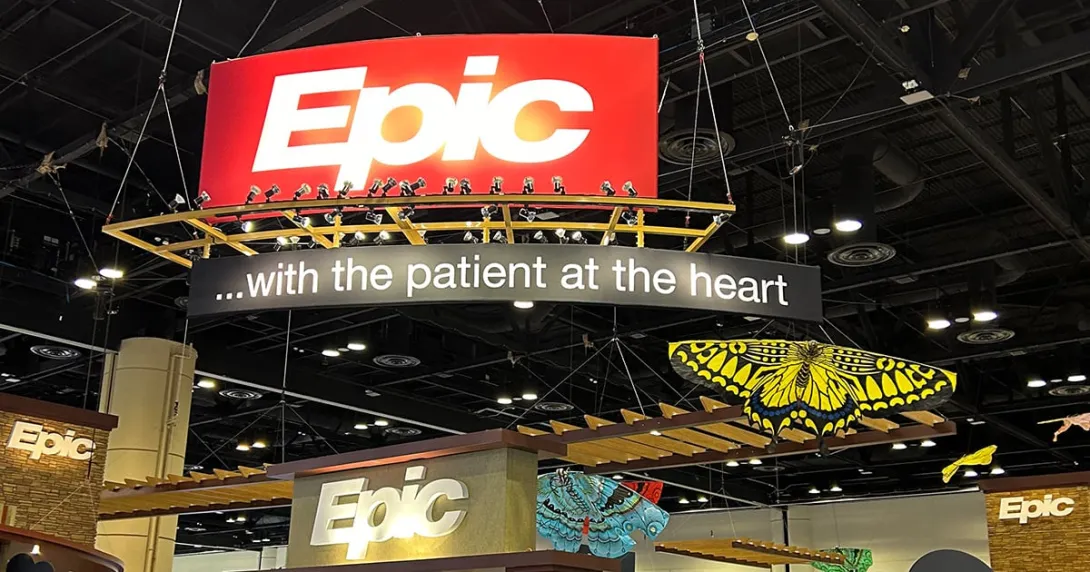In May of 1886 the American South made one of its biggest concessions since the end of the Civil War—three inches. After months of negotiations, the Southern Railway Company agreed to tailor their railroad gauges to fit the Pennsylvania Railroad Company’s standards.
Some Southern Railway Company railroad gauges were four feet and nine inches – a seemingly small difference that in practice crippled America’s connectedness. That’s because when a moving train reached a point where the width of the track changed, its entire contents would have to be unloaded and repacked onto a new train that fit the track.
It’s hard for us to imagine this sort of problem today. But it turns out that the way in which we manage people’s healthcare information is eerily similar to it. Different standards for how information is saved and shared make it nearly impossible to track a patient’s health and communicate between different doctors and different hospitals.
That’s why Christiana Care – a regional, community-based, academic health system based in Wilmington, Del. – is committed to leading the use of health information technology as a catalyst for clinical transformation.
Since 2007, Delaware has been proud to host a statewide health information technology network, the Delaware Health Information Network. Our experience has illuminated several key lessons that policymakers and healthcare professionals should keep in mind for the adoption of the new meaningful use standards.
The adoption of healthcare information technology must be guided by a vision of transforming care. The 2009 American Recovery and Reinvestment Act authorized historic investments so that we have the potential to transform healthcare in America. But to fully benefit from healthcare information technology, we must use it to dramatically improve the quality, efficiency and cost of care.
Building such a system is costly. Even with the federal government’s almost $20 billion investment, states and localities will also have to make big investments in sustaining and improving these systems. Individual doctors may hesitate to spend thousands of dollars on new electronic systems. These investments should be tempered by financial realities on the ground.
That’s why Christiana Care partnered with Delaware’s regional extension center on a pilot program for community-based doctors to become a network of meaningful users. This is a leadership moment for hospitals and health systems to assist local doctors with the critical initiative of healthcare information technology
We must build a smooth, fully integrated system. What’s the benefit of moving to electronic medical records if they can be accessed in one doctor’s office but not in another? Much like the railroads, unless we implement standards for healthcare IT we’ll end up with an incompatible, inefficient system.
The federal government understands these complexities. In recently released regulations, the Department of Health and Human Services outlined meaningful use principles to reward a transformative vision of healthcare IT. They promote a holistic preventative approach and provide incentives for accurate and timely communication among the clinicians. The newly implemented meaningful use standards are a critical step in establishing the value proposition for electronic systems.
Fully integrated systems will do little more than collect dust unless doctors use them. That’s why at Christiana Care, we’ve decided to make health IT training a fundamental part of our residency training program. Starting this month, we are hard wiring meaningful use into our core curriculum for medical, dental residents and fellows.
And for doctors who may have trained before the Internet age, we’ve created a range of continuing education opportunities so that using IT isn’t such a daunting proposition. We want all health professionals equally comfortable implementing this technology so they can leverage it in their practice to catalyze transformation and improve patient safety and quality.
To truly leverage the promise of IT, we need to engineer new approaches instead of merely standardizing existing ones. We need to break down the barriers that prevent hospitals from fully engaging community-based physicians with their work. We need to retool payment systems so that they support population-based approaches to care. And we need to strengthen the coordination of primary care and specialties.
This incredible technology can create an efficient, effective and easily accessible database of information to streamline medical records and improve patient outcomes. If we can get health IT right and implement it meaningfully, then we can transform healthcare in this country.
Robert J. Laskowski, MD is CEO of Christiana Care


